Beijing, part 16: Driving, etc.
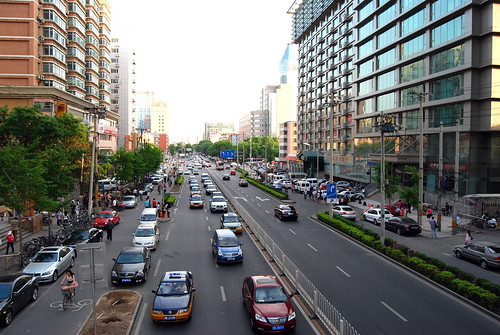
A typical Chinese city arterial street. Note the secondary lanes to the sides, primarily for bicycles, separated from the car lanes. Wide enough for cars, but you need to drive slowly. The street doesn't seem much wider than a typical American street, does it? If Seattle were serious about bicycles, we'd have avenues like this, instead of the stupid "sharrows" all over.
Another feature on Chinese streets: the countdown clock. They tell you how many seconds are remaining for the signal, whether it's red, green, or an arrow. In Seattle, we have countdown clocks on the pedestrian crossing signals, which I sometimes look at while driving to know how much is left in my green light. Wouldn't it be simpler to have it overhead? It's helpful to drivers so they know when they're not going to make a green or to minimize their impatience while waiting at a red.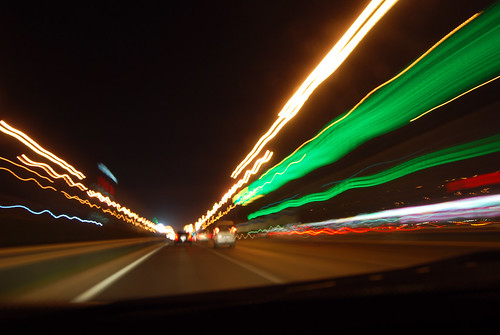
Expressways are always fun, if they're flowing...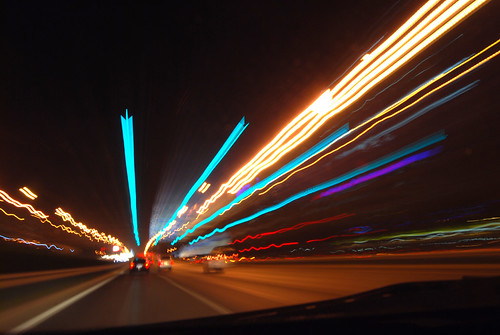
The blue streaks overhead are actually green arrows. The expressways (toll required, so not freeways) in Beijing are all very controlled. Variable speed limits, arrows for merging around blocking -- similar to what WSDOT installed in south Seattle on I-5 this year. But Beijing also has large signs that are maps of the near section of the expressway system, with red, yellow, and green lights showing where backups are. The closest we have in Seattle are a few "this way is 11 minutes, this way is 15 minutes" signs that don't really help you if you're not going to downtown Seattle or downtown Bellevue.
The Jingcheng Expressway north out of town, like many Chinese expressways, had different speed limits (maxima and minima) for different lanes.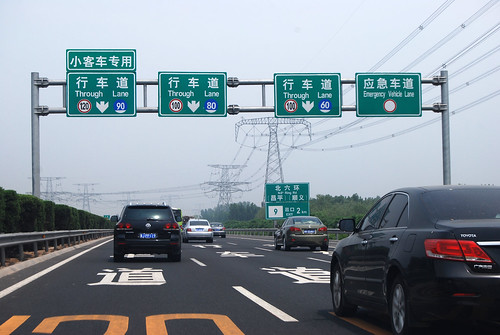
Didn't we try that in the US and decide it didn't work?
Along with large signs saying "no overheight loads" (cartoon giraffe in a truck), "no overweight loads" (cartoon elephant in a truck), "no drunk driving" (various alcohol bottles and glasses), Beijing also had entertaining "no littering" signs.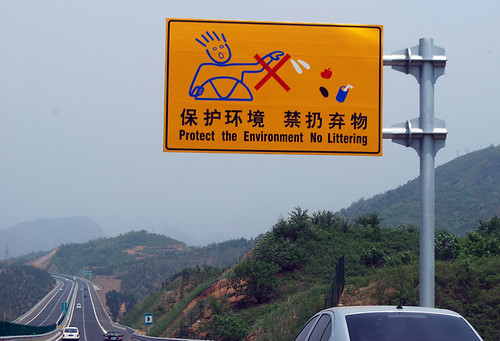
Also this "Don't Use Neutral on the Downhill" sign...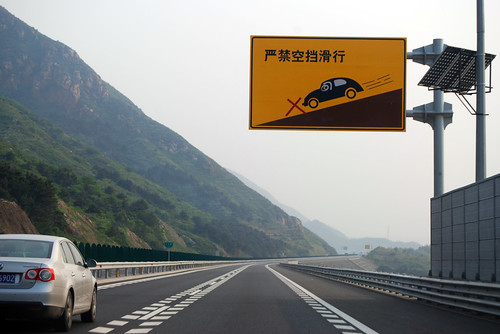
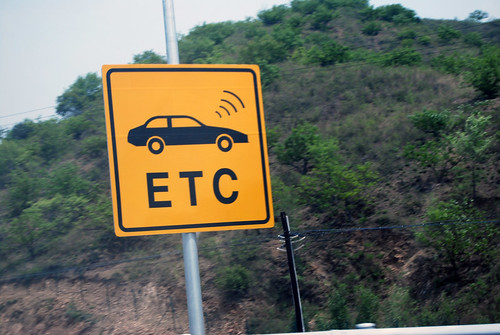
I saw these signs along the expressway, when approaching tollbooths. At first, I assumed they meant "etc." for "all other vehicles," but that didn't really make sense. The ETC lanes didn't have to stop, and why would the Chinese abbreviate in Latin? And then we figured out that it stood for "Electronic Transmitter C-doohickey," or whatever. Electronic tolling like WSDOT's Good-to-Go program where you put a transmitter in your car, linked to a prepaid account.
Chunyu's car had a built-in GPS.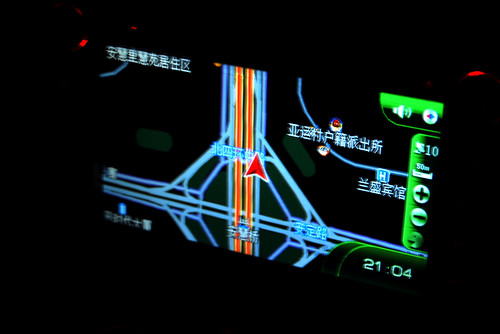
It worked swell most of the time, but when we drove out to the Great Wall on the new Jingcheng Expressway, it failed.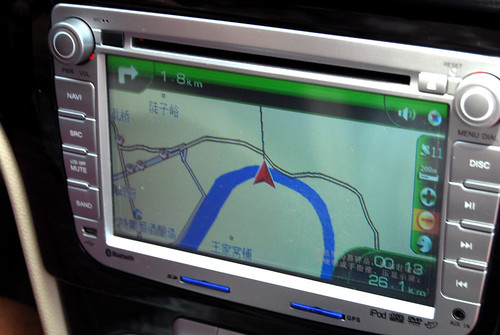
The GPS told Chunyu to exit the expressway and get on the old highway, but I convinced him not to exit. Soon we were wandering across the countryside, flying over rivers and through mountains, nary a road in sight (on the map, at least), while the GPS tried to recalculate...
Oh well. At least it played DVDs.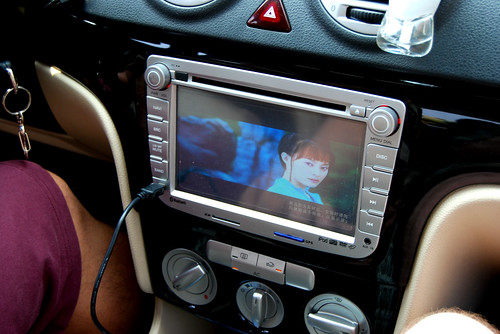
A DVD player in the front seat of the car is a delightfully dangerous distraction. Kung fu!
I wasn't entirely comfortable with Chunyu watching the movie while driving. Drift in the lane, drift slower and slower, speed up again. Eyes on the road, please.
On Sunday morning, 'twas an empty city. Our whole family piled into the car, going down the relatively empty road.
A donkey pulling a cart down the boulevard...
Chunyu wasn't quite sure how to get to the Drum Tower, so he turned left down an alley shortcut to the expressway and we wound up three miles off-course -- in the middle of a traffic jam. Nice. How come Chaoyang Road was so clear? How come he didn't know it went straight into town? When we finally got near the Drum Tower, traffic was so slow that pedestrians passed us. The heart of Beijing is made for bicycles and pedestrians, not automobiles.
On Chaoyang Road, dozens and dozens of apartment skyscrapers were under construction, vacant. Three-story worker shelters cowered nearby. Who will live in this new city? A half million new residents -- from older parts of Beijing? From the provinces? And they'll be served by two or three new subway stops on the 6 line (under construction -- Coming 2011!).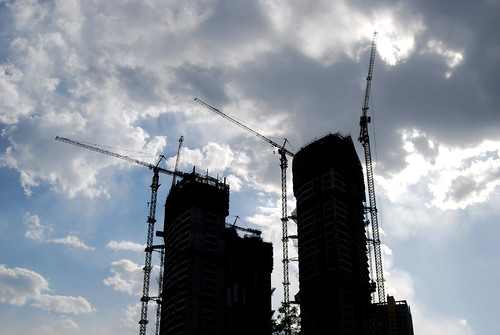
No city's subway is as complex as New York's, I'd say. Big? Yes. Busy? Yes. Complex? No. Beijing and Shanghai both need a lot more crisscrossing lines to get to New York's level. Beijing is trying to have New York's subway system overlayed with Los Angeles's expressway system, but they're not there yet. Right now, they have Houston's expressway system with ten times the traffic. A car town desperately trying to catch up.










No comments:
Post a Comment